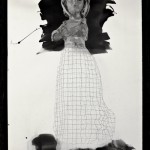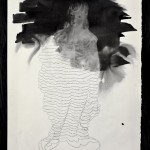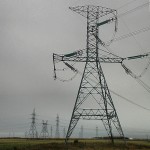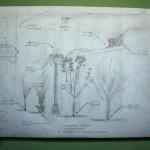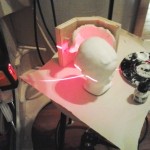 The second series of works created using photographic drawing began as an attempt at portraiture that would expand the role of the drawing from representation to the direct recording of shape and form. In order to record the form of the objects i needed large depth of field as i was recording three dimensional geometry from outside the focal plane. Read more about the process here
The second series of works created using photographic drawing began as an attempt at portraiture that would expand the role of the drawing from representation to the direct recording of shape and form. In order to record the form of the objects i needed large depth of field as i was recording three dimensional geometry from outside the focal plane. Read more about the process here
The lighting conditions required for the tiny apertures were far to hot for human consumption and small sculptures were enlisted to withstand the heat.
It was a struggle to establish a drawn three-dimensional space in conjunction with the photographic images but after introducing a technique to allow for the capture of the rear-side geometry of the sculptures the two processes cooperated to create the impression of a single sculptural form simultaneously virtual and physical.
Click here to view the images created.
Through this work I was interested in two directions for the drawn portion of the images. Firstly I wanted to continue to explore the recording of space and secondly I began to experience the drawn space as an extension of the imaginary, as direct expression of mind and its various constructions of knowing.
In order to move into interacting with landscape and larger spatial forms i could not use the laser scanning and plaster casting techniques adopted for the portraiture project, something that could quantify at a distance was needed. I initially hoped to build a form of range-finding apparatus that I would be able to operate from inside the camera but decided to begin experimenting with theodolites (a foundational surveying tool)
I worked with the theodolites annotating sketches of the structures and landscapes. Overlaying the three dimensional data, I explored the idea of depth within the two dimensional image, how they are coupled in perspective but also at odds with one another.
It is my impression that our sense of depth through vision is very weak in terms of accuracy and speed relative to our perception of height and width. That we create impressions of depth through a multifaceted correlation of senses, stereo vision, physical motion memory, sound. While we see two dimensions readily through optics and geometry we heavily construct the third through a multi-sensory correlation of impressions of space.
The field work for the forgotten futures project was in part set in motion by a suggestion from Larry Glawson.
Larry suggested that there were three things that people photographed: Architecture, Landscapes, and People. Having just stumbled across the process of combining liquid light with drawing inside the camera obscura I felt like i did not understand the relation between drawing and photography well enough to engage it directly and chose instead to embark on a form of limited survey of photographic subjects to direct my explorations while trying to understand how the hybrid drawing/photographic process re-contextualized photography generally before focusing in on more developed projects.
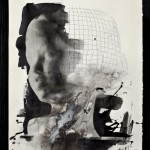 In the first project, involving architecture, the drawing and photography played a parallel role. Reach contributing a direct representation of the projection inside the camera obscura. The resulting work was interesting in juxtaposing the tow mediums and practices against one another and I was struck as someone new to drawing how the two mediums seemed to aspire toward the other; the photographic reaching for expression and the drawing reaching for realism. It did however feel like the capability of the drawing process was not being realized and that in the next series I desired to expand it in some way.
In the first project, involving architecture, the drawing and photography played a parallel role. Reach contributing a direct representation of the projection inside the camera obscura. The resulting work was interesting in juxtaposing the tow mediums and practices against one another and I was struck as someone new to drawing how the two mediums seemed to aspire toward the other; the photographic reaching for expression and the drawing reaching for realism. It did however feel like the capability of the drawing process was not being realized and that in the next series I desired to expand it in some way.


